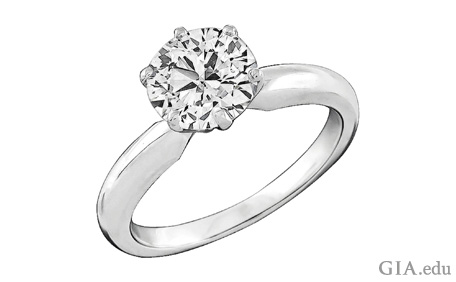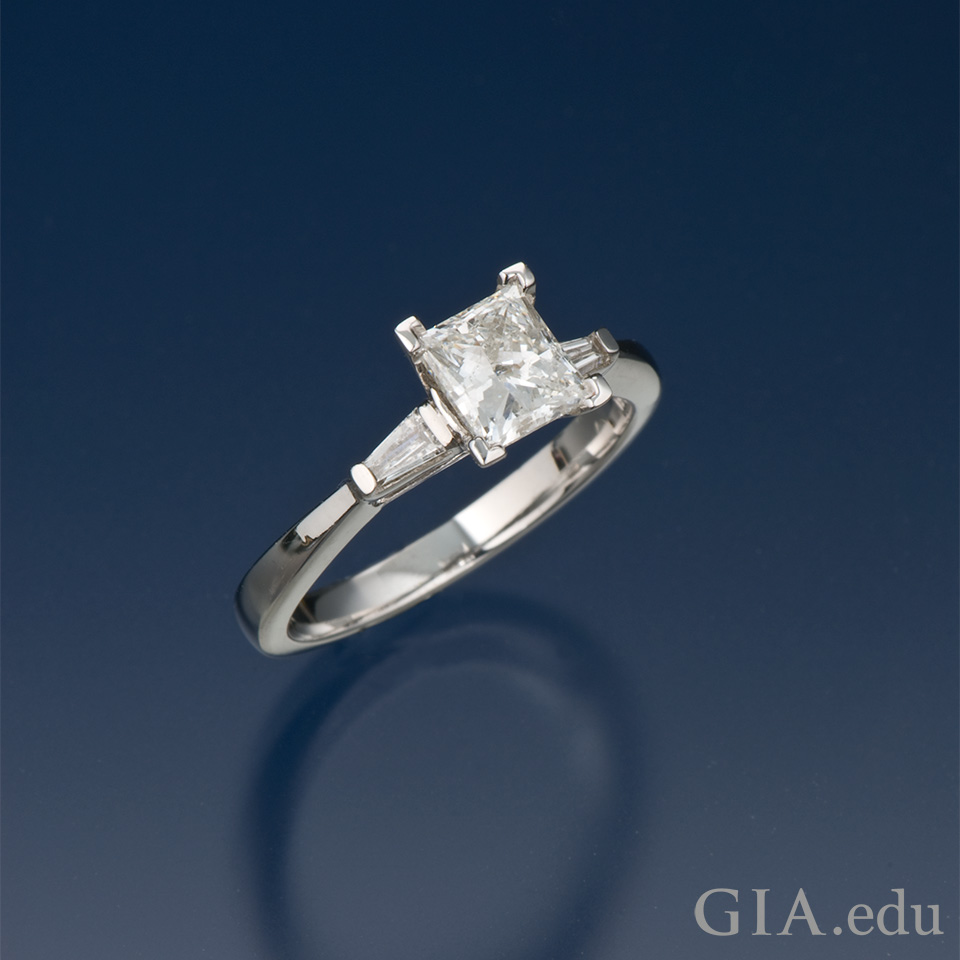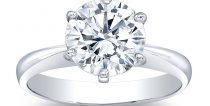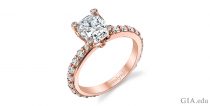The process of selecting an engagement ring is full of big decisions and small ones. You’ve learned about the 4Cs (color, clarity, cut, and carat weight) and the important role they play in determining a diamond’s value. You’ve probably spent some time deciding on the right diamond shape. And you’ve thought hard about picking the right white metal or whether to go with gold. You’ve finally chosen a solitaire setting, and now have to decide on the number of prongs.
Prongs may be small, but they play an important role in showcasing the diamond and protecting it from damage and loss. So it’s worth spending a few minutes learning about the pros and cons of four-prong versus six-prong settings. But if you read no further, here’s our spoiler: In our view, the security of the diamond is the most important factor to consider. If you’re not sure how many prongs to pick, go with six.
What is a prong?
Designed for single stone or solitaire rings, prongs act like a claw, holding a diamond in place in a visually unobtrusive way. Prongs are like small wires that bind the stone; they are welded to the band to ensure the diamond’s safety. Prongs suspend the stone high enough off of the band to show its size and detail.
Four-Prong Settings
Pros
- Four prongs mean less metal on the diamond, letting the center stone be the star of the show.
- Four prongs can give a diamond a more “squarish” look, making it a good choice for princess cut, cushion cut, and other diamonds that are square or rectangles.
- Smaller diamonds (less than a half carat) can be dwarfed by prongs, so four prongs might be a good design choice.
Cons
- Four prongs don’t hold a diamond as securely in place as six prongs.
- Four prongs don’t offer as much protection for the girdle as six prongs.
Myth: Four prongs allow more light to enter the diamond, giving the stone more sparkle.
Fact: A diamond’s sparkle is determined by the quality of its cut, not by the number of prongs in a setting.
Six-Prong Settings
The Tiffany six-prong setting, introduced over 125 years ago, is the iconic image of the engagement ring. This look helped popularize the giving of diamond solitaire rings for engagements, and it remains a favorite, and often imitated, style.
Pros
- Six prongs hold a diamond more securely in place. If a prong is accidentally sheared off in a four-prong setting, the center stone can easily fall out (and get lost). If a prong breaks in a six-prong setting, chances are the center stone will remain firmly in place.
- Six prongs offers better protection to the diamond’s girdle than four prongs.
- Six prongs can make a round shaped diamond or gemstone look rounder.
Cons
- Diamonds smaller than a half a carat may be overshadowed by all the prongs.
We hope you find this information helpful in deciding between a four and six prong setting. If you need a quick reference guide to help you with your diamond engagement purchase, you might like our Diamond Buying Guide Tip Sheet.









